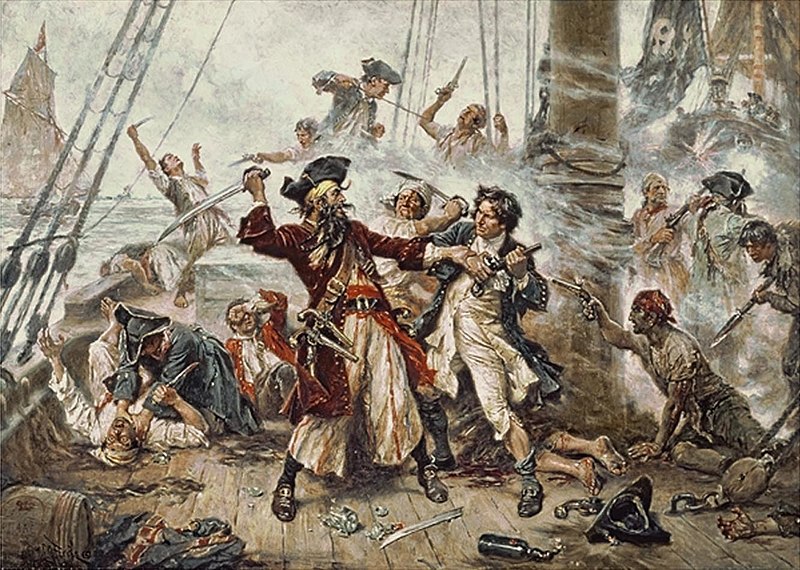 |
| 16th century victim suffers keelhauling, an ancient punishment. |
At the sound of a cannon shot, the punishment detail let go of the rope and the victim fell into the sea. The punishment detail or perhaps the entire ship's company then hauled briskly on the rope on the opposite side of the ship, drawing the victim along the hull on one side, then over the ship's keel. From there the rope dragged the victim over the opposite side of the hull until the victim was hoisted up on the other yardarm, where he might hang for a quarter of an hour. There are accounts of keelhauling being repeated several times as 17th century author Christophorus Frikius claimed to have witnessed in his 1680 book Christophorus Frikius's Voyages to and through the East Indies.
On large ships, victims were keelhauled from port to starboard while on smaller vessels they had to endure being keelhauled from bow to stern. If a ship had not been recently careened, then the victim had to pass over razor-sharp barnacles and marine grown, causing numerous cuts and perhaps even a decapitation. If not drowned outright, then the victim could die from painful wounds caused by keelhauling.
The Dutch and later other European Navies appeared to start using keelhauling in the 16th century. There is some doubt if the practice was officially condoned in the British Royal Navy, although I've run across a reference to it happening before 1797. The practice continued in the French Navy until finally abolished in the mid-1800s. There is an account of a keelhauling of two Egyptian sailors by the Egyptian Navy in 1882 at Alexandria, as mentioned in the The House of Commons Papers, Volume 33, 7 February -- 2 December 1882.
However, keelhauling may have not been an modern invention. Ancient Greek vases appear to show ancient pirates or sailors be punished in this way.
The reputation of this brutal punishment caused slang English to use the the word keelhauling for rough treatment.
For writers of pot-boilers during the 1800s, walking the plank and keelhauling were standard plot staples. I've even spotted a typo from that time, where the author actually meant close-hauling, which is a point where the sailing ship is almost but not quite sailing, rather than the word keelhauling. It is alas, a word that sticks in your mind, even if you don't know what it means.
















